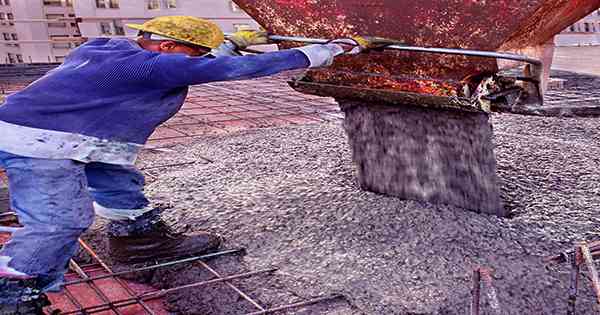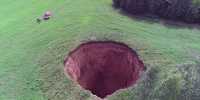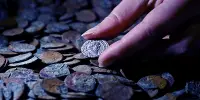The spring construction season is underway, and lots of tons of concrete will be used in the next few months. Unfortunately, concrete is a fragile material: kept under pressure, it cannot be bent too much before fracture. Some of the sidewalks that are now being poured will crack in a few years and require expensive repairs. New concrete will be mixed, and the cycle will begin again. But there is a better solution.
My laboratory at the University of Michigan, along with other laboratories around the world, has shown that it is possible to make concrete more flexible – that is, to bend without fractures. Bendable concrete makes infrastructure more secure, extends its service life, and reduces maintenance costs and resource utilization.
Making concrete bend: For the development of flexible concrete, our laboratories borrowed the idea from Necker, also known as the mother of pearl – the ides insulating material inside the abalone shells. Mollusks make nacre from aragonite, a natural form of calcium carbonate, which is extremely brittle in itself. But the nanoscale is flexible in necrosis due to its architecture, making it look like a brick wall.
“Brick” is a thin layer of aragonite platelets and the “mortar” between them is a natural polymer that is very elastic. The polymer holds the strong aragonite layers together but allows them to slip from side to side under pressure. This structure makes the nacre both strong and flexible. Concrete is a composite mixture that is usually bound with gravel and sand particles cement. To create the design of flexible concrete, we simulate Nacre’s “give” by spreading tiny fibers inside the compound. When properly controlled, the interfaces between the fiber and the cement regenerate the necrotic-controlled lubricants.
We call the resulting flexible concrete engineered cementitious composite (ECC) or strain-hardening cementitious composite. It can develop up to 3 to 5 percent in tensile strength before it fails, giving it 300 to 500 times more stretch strength than normal concrete. This allows a slab of it to bend a lot without breaking into pieces, giving it the nickname of flexible or bendable concrete. ECC was invented at the University of Michigan and it has now been acquired by several hundred more universities and industrial entities to further develop engineering research and technology.
The social costs of brittle concrete: Civil infrastructure rarely fails because it lacks compressive strength – the ability to carry loads that push one another, while the columns support the weight of a building. Most failures occur because structures do not have sufficient capacity to withstand tensile loads – the ability to deform or expand without dissociation – although steel reinforcement is often associated with concrete to prevent catastrophic structural failure. Many serious concerns about the dire state of U.S. infrastructure are found back in the fragility of concrete. Cracks in concrete can shorten the usable life of any structure. They weaken it and make it less effective against natural forces such as earthquakes or tornadoes, or man-made bombings in terrorist attacks such as terrorist attacks.
For example, a building and freeway collapse killed 52 people in the 1989 Loma Prieta earthquake in Northern California. Major Freeway also suffered extensive damage in the 1994 Northridge earthquake in Los Angeles, one of which was rebuilt after an earthquake in 1971. If the quake occurred during a week-long run at 4:30 a.m. on a Monday holiday, the results could be catastrophic. Repeated infrastructure repairs and reconstruction use large amounts of materials and energy. Studies have shown that the carbon and energy footprints of frequent repair events and the social and economic costs they generate are much higher than those involved in the initial construction. We pay these costs when we are stuck in traffic jams, higher taxes, and polluted air.
Uses for bendable concrete: First, suppressing brittle fractures prevents wide cracks that allow other aggressive agents such as water and street salt to easily penetrate the concrete structure and attack their strong steel. Experimental evidence and our theoretical calculations show that it is possible to take time for chloride from road salt to the surface of the deck of the bridge and for years to strengthen the steel. Many projects ranging from patch repairs on bridge decks to connecting slabs that dramatically extend service life have taken on the ability to suppress these fractures.
Bendable concrete enables structural elements to absorb a lot of energy. For example, manufacturers have built ECC dampers to help rebuild the 26-kilometer Seisho Bypass Viaduct off Japan’s east coast and to reinforce new tall buildings during earthquakes, including in Tokyo and Osaka.
Flexible concrete has many more potentially wider industrial applications, including water infrastructure and underground construction. Extensive use of the ECC will require good supply chains and intelligent use of materials to optimize cost economy. The most notable obstacle is still relatively novel to EC structural engineers, who are trained to take the idea that concrete cannot withstand tensions.















